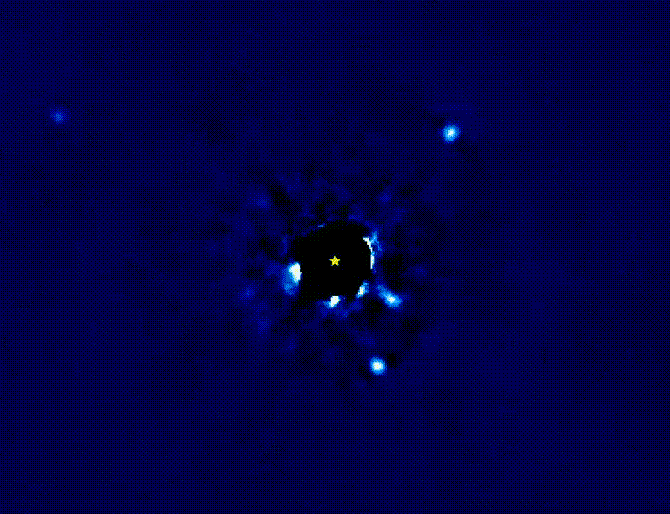Worlds in the orbits of other stars are called "exoplanets," and they range from giant gas giants larger than Jupiter to small rocky planets like Earth or Mars. Distant planets can be hot enough that metal melts on their surfaces, or icy snowballs. Many of them revolve so quickly and closely around their stars that their year lasts several Earth days. Some may have two suns. There are wanderers expelled from their systems, those who wander in the dark across the galaxy.
The Milky Way is a huge family of stars, spanning approximately 100,000 light years. Its spiral structure contains about 400 billion inhabitants, and our Sun is among them. If each of these stars has not one planet in its orbit, but several, as in the solar system, then the number of worlds in the Milky Way is simply astronomical: the count goes to trillions.
For several centuries, mankind has been thinking about the possibility of the existence of planets around distant stars, and now we say with confidence that extrasolar worlds do exist. Our closest neighbor, Proxima Centauri, recently had a rocky planet discovered , and it probably isn't alone. The distance to it is approximately 4.5 light years or 40 trillion kilometers. However, most of the exoplanets found are located hundreds or thousands of light years away.
Bad news: we have no way to get to them yet. The good news is that we can look at them, estimate temperatures, “probe” the atmosphere, and perhaps soon discover signs of life that are hidden in the dim light from these distant worlds.
The first exoplanet to enter the world arena was 51 Pegasi b, a "hot Jupiter" 50 light years from us that orbits a star in 4 Earth days. The turning point after which extrasolar planets became commonplace came in 1995.
We now live in a universe of exoplanets. Their number is constantly increasing, and at the moment the number of confirmed planets outside the solar system has crossed the line of 3700, but in the next decade, the schedule may jump to tens of thousands.
How did we come to this?
We are on the verge of great discoveries. The era of early exploration and the first confirmed exoplanets set the stage for the next phase: the hunt for distant worlds with more "vigilant" and sophisticated telescopes in space and on earth. Some of them have been tasked with conducting an accurate population census, calculating the various sizes and types of exoplanets. Others scrutinize individual worlds, their atmospheres, and their potential to sustain life.
Direct visualization of exoplanets, that is, their actual images, play an increasingly significant role, although scientists have reached the current level of knowledge mainly by indirect means. The two main methods are wobble and eclipse.
The first is based on fixing distinct oscillations of stars under the influence of gravity of an orbiting planet. These deviations characterize the mass of the exoplanet. The method made it possible to confirm the first candidates, including 51 Pegasi b, and in total, by measuring the radial velocity, about 700 worlds were discovered.
But the vast majority of exoplanets are found by the transit method, which is based on capturing an incredibly tiny drop in the luminosity of a star when a planet crosses its disk. This search strategy indicates the size of the object. NASA's Kepler Space Telescope , launched in 2009, has found about 2,700 confirmed exoplanets this way. To this day, he is discovering new worlds, but, unfortunately, his hunt will soon end, as fuel is running out.

Animation composed of images of four massive exoplanets orbiting young star HR 8799.
Source : Jason Wang / Christian Marois
Each method has its own pros and cons. Measuring the radial velocity shows the mass of a planet, but does not provide information about its diameter. The transit speaks of the size of the extrasolar world, but does not allow determining the mass.
But, when several methods are used together, we can obtain important data about the planetary system without direct visualization. The best example is TRAPPIST-1, about 40 light years away, in which seven Earth-sized planets orbit a small red dwarf.

